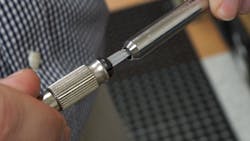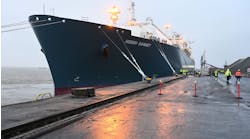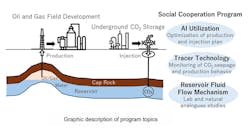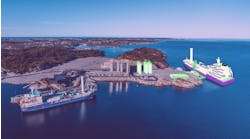New fittings technologies offer leak-tight connections for topsides fluid system applications
Chuck Erml, Swagelok Co.
A change in the fittings technology used for medium-pressure fluid system applications can yield major life cycle cost savings for offshore topsides assets. Switching from traditional cone and thread fittings to FK series compression fittings allows assemblers to install fittings approximately five times faster, while virtually eliminating rework needs during hydrotesting and acceptance testing.
The key to these time, labor, and cost savings is the simplicity and consistency of making leak-tight connections with FK series fittings. Cone and thread fittings, which require installers to manually prepare tubing, take about five times longer to assemble, comparatively. In addition, up to 20% of cone and thread fittings require rework to ensure a positive seal during initial installation. With dozens to hundreds of connections found on common topsides assets, the faster installation capabilities of FK series fittings yield significant time and cost reductions, as well as accelerated asset deliveries.
Swagelok offers both FK series compression and cone and thread fittings, and the company recognizes that both fitting types require trained installers who can accurately measure, cut, and prepare tubing, as well as properly assemble fittings. However, cone and thread fittings require more labor-intensive intermediate steps than FK series fittings, including manually machining both ends of tubing to create cone interfaces and threads. The process is time-consuming and can result in rework if any scratches are present on the coned sealing surface.
The intermediate steps for assembling FK series fittings are simpler, as the installer does not have to machine the cone profile into the tubing. Instead, the installer first threads a preassembled FK cartridge, which includes a male nut, two ferrules, and a plastic arbor, into the female port of the fitting body to ensure the ferrules are installed properly. After finger-tightening the nut, the installer removes the plastic arbor and inserts a tube into the fitting.
The final assembly step for both fitting types is to tighten the fittings with a wrench.
To compare the timing differences between the two fitting types, consider a hypothetical example of fabricating a medium-pressure skid package for offshore oil and gas operations. The skid features 316 stainless steel tubing and fittings, and a single trained installer will assemble the skid’s 500 fitting connections. Assuming the FK series fitting will take four minutes from start to finish, the cone and thread fitting will take 20 minutes (or five times longer). Therefore, the total time to complete the 500 connections with FK fittings is 2,000 minutes (33.3 hours) compared to 10,000 minutes (166.7 hours) for cone and thread fittings.
In addition, factoring in a 20% rework requirement for cone and thread fittings can add another 2,000 minutes (33 hours) to repair any leaks discovered during pressure testing. By contrast, the FK series fittings should not require any rework due to their simpler installation procedure and error-proofed cartridge design.
With the ability to install medium-pressure FK series compression fittings five times faster – while providing a more reliable and robust connection resulting in increased uptime – offshore asset owners and operators can dramatically lower their total cost of ownership by choosing these fittings over cone and thread fittings. •
The author
Chuck Erml is a product manager for Swagelok Co.




